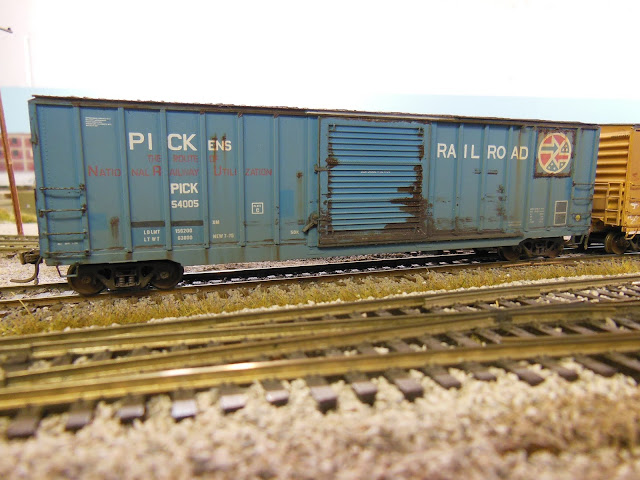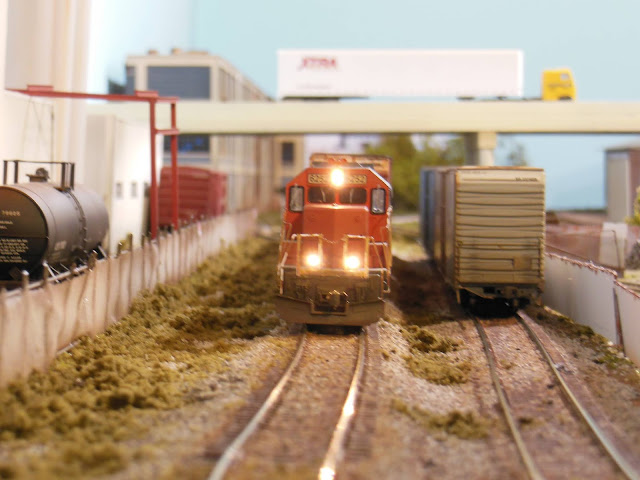I'll get to the pallets in a minute, but first there's this...
 Back on April 24, I posted this photo (above) taken by Brian Smith. Brian has now also sent me a more close-up view (below) of the graffiti art, so I thought I should post it as well.
Back on April 24, I posted this photo (above) taken by Brian Smith. Brian has now also sent me a more close-up view (below) of the graffiti art, so I thought I should post it as well.I know I won't be trying to copy this in HO scale.
Speaking of HO scale, a recent project I thought I'd give a try involved my Northwest Short Line Chopper. Gotta remember to be careful when using the chopper though, because that blade is sharp (don't ask me how I found that out).
I don't really have a whole lot of "detail parts" on my layout, but I tried my hand at making a few wood pallets out of styrene strips (probably have to be a model builder for that to make sense). I did buy a small package of pallets one time. I don't remember who made them, but I looked up some other ones online this week, and for a package of 8, they were going to cost $9, plus tax.
Anyway, this idea worked out reasonably well, so I thought I'd share.
When I worked in a factory shipping office some years ago, one of the duties was to make sure we always had plenty of pallets available for the plant. We would order basically 3 sizes but the most commonly used were 3' x 4' with no bottom boards We generally referred to these as "disposable pallets", and with good reason, as it seemed that they'd just about fall apart if you looked at them wrong.
I made up a dozen of the 3x4 pallets, and few 4x4 ones. Here's everything I used to make them. Evergreen Styrene Strip #113 (.015 x .060), NWSL Chopper, Tamiya Ultra Thin (it flows really nicely and dries or cures quickly so that was helpful), Xacto knife, and Tweezers.
It was easy, but fiddly and did take some patience. I chopped a bunch of the styrene strip to 3 foot lengths, figuring on using 6 per pallet. I also cut some styrene to 4 foot lengths, using 3 as stringers on each of the 3x4 pallets, or 4 stringers on the 4x4 pallets. In the photo above, you can see some of the 3 foot strips on the left-hand side of the chopper, and some 4 foot stringers on the right-hand side.
In the photo above, you can see some of the 3 foot strips on the left-hand side of the chopper, and some 4 foot stringers on the right-hand side.
A bit closer view of the 12 3x4 pallets on the left, the 4x4 pallets on the right, and at the bottom is one of the store-bought pallets that I sort of used as an example. I cut a few of the pallet boards shorter (yes, I did it on purpose) to model them as being broken, just as I remember the real ones.
Once I had them all put together, I painted my pallets with "Barn Wood" craft paint, which is a sort of grey/beige colour. I followed that up with a dark grey wash just to dirty them up a bit. Hard to see, unless you really look closely, but I also then used a Burnt Umber ink pen to add nail-head marks to the boards where they would be nailed to the stringers.
Below are a few photos of my finished pallets scattered around some of the loading docks and spurs around the layout...
My best guess is that I spent about 2 hours, and maybe 3 dollars worth of styrene making these 16 pallets.

































